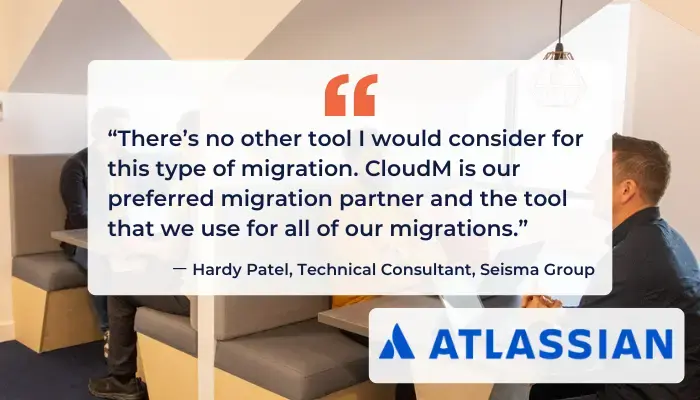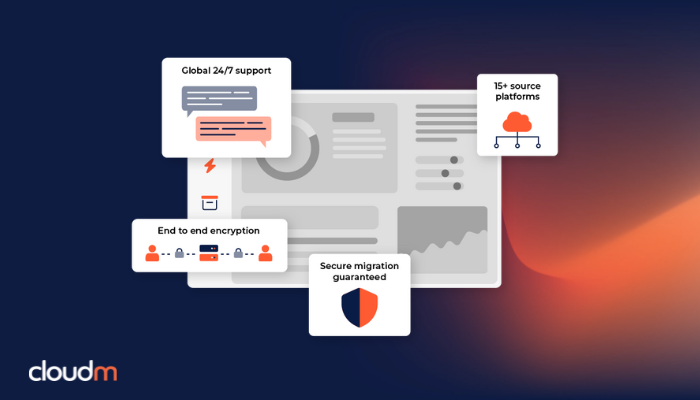Data migrations aren’t just for the huge, multinational companies of the world. Even small businesses need to migrate their data from one system to another.
There are many reasons why a business might need to change systems, from legacy issues, such as older technology, outdated methods, or expired applications, to the company simply wishing to growing and expanding following mergers and acquisitions with tenant to tenant migrations.
Whatever the reason for a data migration, if it’s your first time, you’ll need all the help you can get. If a migration goes wrong, it can have disastrous consequences, logistically, financially, and legally.
With migrations being so important, here are five things to keep in mind if you’re planning one.
1. Have a strategy
A migration is important, so treat it as a separate project, not simply something on your to-do list!
And it’s not only an important job, but a complex one. Don’t underestimate the scale and work involved, from data estimations all the way to change management communications post-migration and everything in between. Before you do anything, sit down and plan accordingly. Figure out exactly what you want to do and how to do it.
How will you migrate the data? In smaller, manageable chunks or in one go to get it over and done with?
When will you do it? Is there a licensing deadline you need to meet? Do the majority of data moves need to happen at the weekend when there is less disruption to the business?
Who will do it? Is everyone working on this or will you create a specialized team to deal with it? Do you need third party expertise or consultancy to help you execute it?
Whatever you decide, everyone must be on board and up-to-date with the plan.
Estimate the time and budget for the migration and then add extra in case of any setbacks. Anticipate downtime, how that will affect your business, and what you can do to minimize it.
Planning a migration is half the battle, so avoid rushing into anything.
2. Know your source data
Before you start migrating data, you need to know exactly what it is you’re moving.
What format is the data in? Where is it in the system? Does it even need to be migrated?
Clean your data first, delete what you don’t need, and tidy the rest. This will not only make the migration process smoother, but it will prevent unnecessary confusion in the new system.
Watch out for duplicates; you don’t want to move the same files twice as this will cost you time, money, and further problems down the line.
Just like moving house, a migration is the perfect time to have a good clear-out and get everything in order.
If you’re moving between systems it’s also important to check whether your source and destination combination is supported by your migration tool of choice.
3. Know your destination
Knowing everything about where the data is coming from is half the battle, the other half is knowing where it’s going to.
From simple things like username conflicts to license fees, the new system will have its own set of rules and regulations.
If, for example, your new system is Google Workspace, how will that affect your data? If you’re moving from an old, physical server to the Cloud, will everything run as expected?
And a migration can affect more than simply the data you intend to move. If you’re moving to a platform that already has data, you need to make sure everything is compatible.
There are many variables to consider when migrating data, both where it’s coming from and where it’s going to.
4. Back up before you pull the trigger
Before the migration begins, first thing is first – back up your data!
Make sure everything is backed up, especially the files you will be migrating. If there are any issues or problems during the migration, such as corrupt or missing files, then you can always restore from the backup.
From the very start you should be bringing in the entire team to discuss the migration. Different departments have different points of view, and there might be some things that won’t have occurred to you but will be obvious to others.
A migration also usually involves a host of different teams, so encourage people to communicate with each other, reporting issues or potential concerns freely.
5. Call in the experts
Data migration is a big job, even for a small company.
Trying to do it all yourself using seemingly free tools is a risky option, especially when it comes to migrating sensitive information.
And just because you have an IT team, doesn’t mean they can handle it all without support. Migrations are a specialized area, bringing with them their own challenges and solutions, and the right advice from experts like us can make things go a lot smoother.
It’s important to understand your limitations, as mishandling a migration can have disastrous consequences. At the very least, you should be bringing migration experts in to help oversee the project.
If it’s a bigger job, then leave the stress, expense, and time out of it all and let specialized migration experts do everything for you with hands-on serviced migrations.
By bringing in the experts, you’re minimizing the chance of something going wrong, as well as freeing up your own IT staff to get on with their own jobs.
Learn how CloudM can help you quickly, easily and securely migrate your data.









